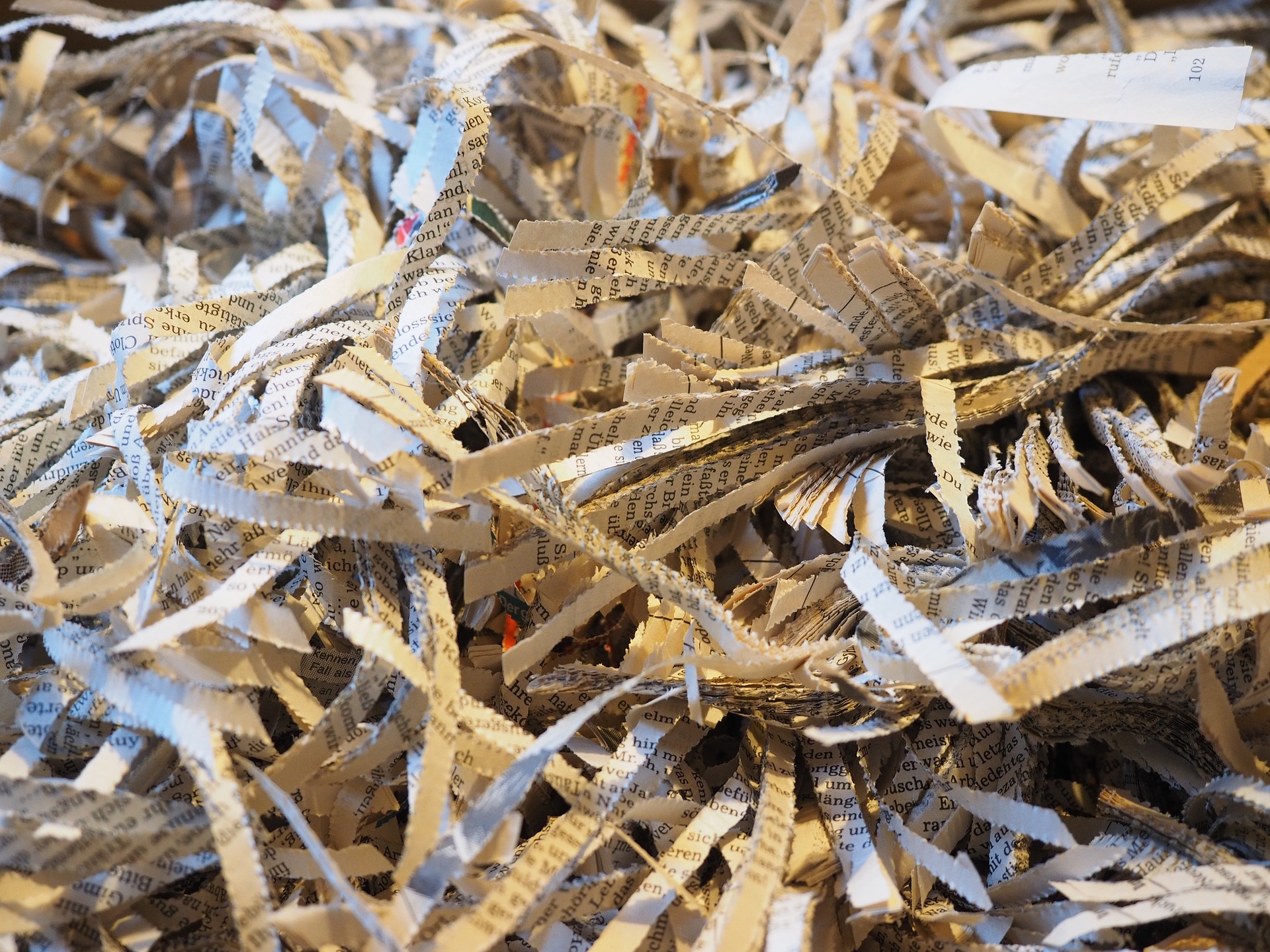Do’s And Don’ts Of Shredding

There is a long-standing quote that “One man’s trash is another man’s treasure”, and in this day in age where identity theft and credit card fraud is at its height, the two go hand-in-hand. Whilst the papers in the safety of our home or office are private, documents once disposed of are exposed to a whole new opportunity to be read and taken. That is why anything containing sensitive or private information should be disposed of, with caution. This is where paper document shredding comes into play, but before going through the machine, here are some things to consider:

To Shred Or Not To Shred?
It is really important to sort through your paper trash with diligence. Essentially, any document that displays information you do not want other people to read, should be put in the “for shredding” pile. Here are some examples:
- Any identification documents containing your legal information such as copies of birth certificates, passports, driver’s licenses, or any other identity cards like social security cards, and Visas (including expired ones).
- Any financial papers such as bank statements, debit and credit card bills or receipts, ATM slips, canceled or void checks, pay stubs, stocks and investment documents, property titles, tax forms, utility bills, policy, and insurance records, etc.
- Credentials statements including but not limited to school transcripts, report cards, employment records, medical, and dental records, and resumes.
Any other documents with names, addresses; residential and e-mail, phone numbers, passwords, PINs, and a signature (contracts, leases, and letters).
Do not shred time-sensitive paperwork. Some documents need to be kept for a while before it is safe to dispose of. For instance, bank statements, employment documents, medical, and utility bills, pay stubs, and tax return records should be retained for at least a year. These documents are usually required as proof for applying for a visa or for opening a bank account among many other things.
Do-It-Yourself
While having a shredder at home is very convenient, it is advisable to read the shredder manual to ensure you are operating it safely. There are also a bunch of tips and tricks when it comes to handling the machine on your own. Home shredding machines can sometimes become fragile if not handled with care. To avoid expensive maintenance payments, or even worse, repairing a broken one, make sure to browse through the manual. Get familiar with its capacities and limitations.
Be sure to not abuse the machine, over-working it can lead to a whole heap of problems. To avoid paper jams, do not overload the machine. If it does happen, stay calm by pressing the stop button first and then press the reverse button to undo the jam. Do not rip off or pull out the jammed paper directly from the machine. If you have to, examine the jammed pieces of paper closer by opening the lid but do not leave the blades exposed as they might end up getting rusty. This will also affect the shredder’s performance overall. Make sure to also be careful of your safety, and watch those fingers.
Go – Pro
Consider using a document-shredding company. The thing is, although personal home shredders are convenient, they cut documents into strips which makes it fairly easy to piece back together if found. Shredding facilities that use these same “strip-cutter” machines don’t provide their customers with the best protection. Look for companies that utilize varied methods of paper destruction to ensure necessary safety from identity theft and other types of dangers from stolen personal documents.
Do not choose a shredding company based on cost. The general rule goes, anything cheaper is not always better. To make sure that your information is being handled safely and correctly, look for a shredding service that has been certified to abide by strict protocols to protect personal data. This includes providing a certificate of destruction. Any company that has the recommended certifications will be able to prove their status on its website or upon request.
Reduce, Reuse, Recycle
Keep the shredded paper contained. Shredded paper is recyclable as long as it is sorted correctly. Consult with the nearest recycling center for advice. As loose shredded paper can be easily blown away, different facilities request they be put in a plastic bag or cardboard box. This eliminates the potential to end up floating around in an ocean where it shouldn’t be.
Do not shred unnecessarily. Just because there is a need for limitless recycling doesn’t mean we need to shred unnecessarily. Avoid shredding documents unless they contain confidential information. Shredding unnecessarily will considerably reduce the paper’s recycling market. The paper fibers accumulated through shredding are mostly very short, making it harder to pulp into a good quality material for recycling. Moreover, tiny pieces of certain materials can get stuck in the paper-recycling machine and can even be a potential overheating or fire hazard. Put those advertisements, brochures, and flyers in the regular recycling bin instead.






